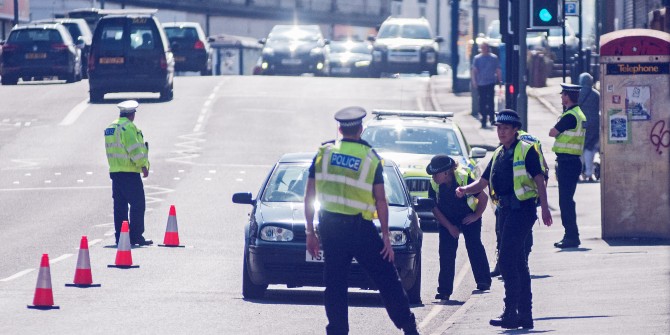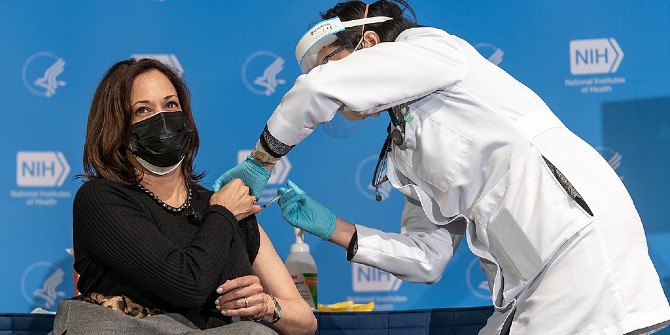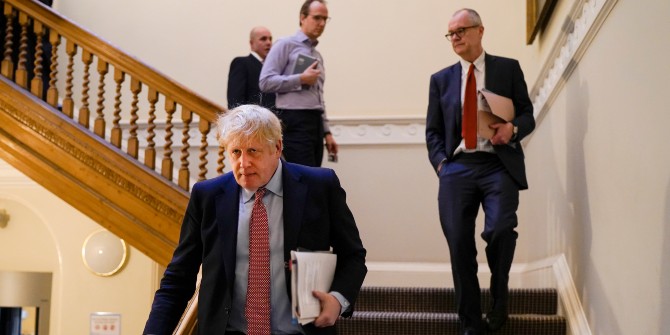Lockdowns have strained the UK model of policing by consent. Geoff Newiss and Sarah Charman (University of Portsmouth) have seen the complaints and messages of congratulation sent to one English force during the spring and summer of 2020.
The first COVID-19 lockdown in the spring of 2020 saw very public demonstrations of support for health service workers as the general public were encouraged to ‘clap for carers’ on Thursday evenings. Those looking after coronavirus patients have rightly been lauded as ‘heroes’, but those responsible for preventing the spread of the virus have not always been appreciated. The imposition of unprecedented changes to the rights and freedoms we took for granted has understandably attracted considerable scrutiny and debate.
Ostensibly, police forces have simply been upholding the law, so why shoot the messenger? However, the application of the law, the interpretation of guidelines, and day-to-day enforcement of the restrictions have seen the police response relentlessly scrutinised.
Early in the pandemic the National Police Chief’s Council (NPCC) and the College of Policing endorsed the ‘4 E’’s approach: engage, explain, encourage and enforce – the latter to be used only as a last resort for obstinate non-compliers. This sits firmly within the long-established models of procedural justice and policing by consent: if individuals are treated fairly and are afforded the opportunity for dialogue, then public cooperation is more likely. So how has this been working in practice? Have we been cheering, or jeering?
The University of Portsmouth has amassed a wealth of data on the public perception of police (and vice versa) during the pandemic, with a range of reports to be published later in 2021. The study is funded by the Economic and Social Research Council (ESRC), as part of UK Research and Innovation’s rapid response to COVID-19. One aspect of this research programme has entailed looking through the records of thanks and gifts – alongside complaints – received by one English police force during the spring and summer of 2020. We make no claim that, on its own, this offers a precise barometer of public sentiment towards the police. However, the records offer a glimpse of the public mindset, and the contrasting perceptions of the role and actions of the police during a time of pandemic.

Findings from the Office for National Statistics show that public perceptions of the police during the first lockdown were largely positive, with just under half of respondents saying they were doing a good job (49%) and one-fifth saying they were doing an excellent job (20%). The University of Portsmouth team has seen 22 expressions of gratitude – letters and online submissions – recorded by one English police force between April and July 2020. Six are notes of appreciation for the police role in keeping people safe during COVID-19, and appeals for police officers to keep themselves safe. A further two records applaud the police without specifically referring to the context of the pandemic.
Fourteen expressions of gratitude compliment the conduct of police officers in responding to specific incidents, including missing persons, concerns for welfare, assaults, disputes and mental health crises. In one case officers are commended for maintaining social distancing in the course of trying to assist a vulnerable person. In addition, the files show numerous gifts received by police – mainly food (e.g. biscuits, chocolates, cakes and fruit) as well as teas, coffees and soft drinks. There are also records of local businesses offering things like hand sanitiser, gloves and masks.
In contrast, 102 expressions of dissatisfaction (from 99 records, three making two separate complaints) were recorded between April and June. Nearly a third (31 records) expressed concern that a crime or incident had not been adequately responded to, including allegations of criminal damage, shoplifting, assault, theft etc. Doubtless similar expressions of dissatisfaction would have been made before the pandemic, with the police facing increasingly complex demands on their time and resources. However, the pandemic does appear to have raised the bar still further (at least during the initial period) in terms of what the police could do, as they sought to minimise contact with people involved in more serious offences – a situation anticipated in the government’s first coronavirus action plan.
A similar number of records expressed dissatisfaction with the conduct of officers during encounters with the public for apparent breaches of COVID regulations (17) or an apparent lack of response to reported breaches (15) – ‘damned if you do, damned if you don’t’?. The former included complaints about the attitude and tone of the police officer involved, or claimed that the restrictions had been interpreted too harshly (confusion over the distinction between outdoor recreation (forbidden) and exercise (permitted) is still evident among senior politicians in 2021). The latter included reports of gatherings of people in homes or outside, and workers and businesses continuing to operate.
Twelve reports concerned the apparent failure of officers to wear PPE or socially distance while engaging with the public. In contrast, one other complainant expressed concern that an officer attended their address wearing a mask and gloves, again demonstrating the virtually impossible task of keeping everyone happy all of the time.
The remaining 27 allegations included, for example, claims that officers had themselves broken the rules while off duty, failures to protect people in custody or care from contracting COVID-19, the potential for police interactions to spread the virus, and delays to court procedures.
The pandemic has changed the nature of policing and with it the interactions between police officers and the public. Policing in England and Wales is built upon the premise of policing by consent, and perceptions of procedural fairness are critical in maintaining the delicate balance between the police and the policed. As we emerge from the latest lockdown, we need to understand the differences in public sentiment towards different groups of key workers and consider how these changes have affected the public image of policing.
This post represents the views of the author and not those of the COVID-19 blog, nor LSE.




